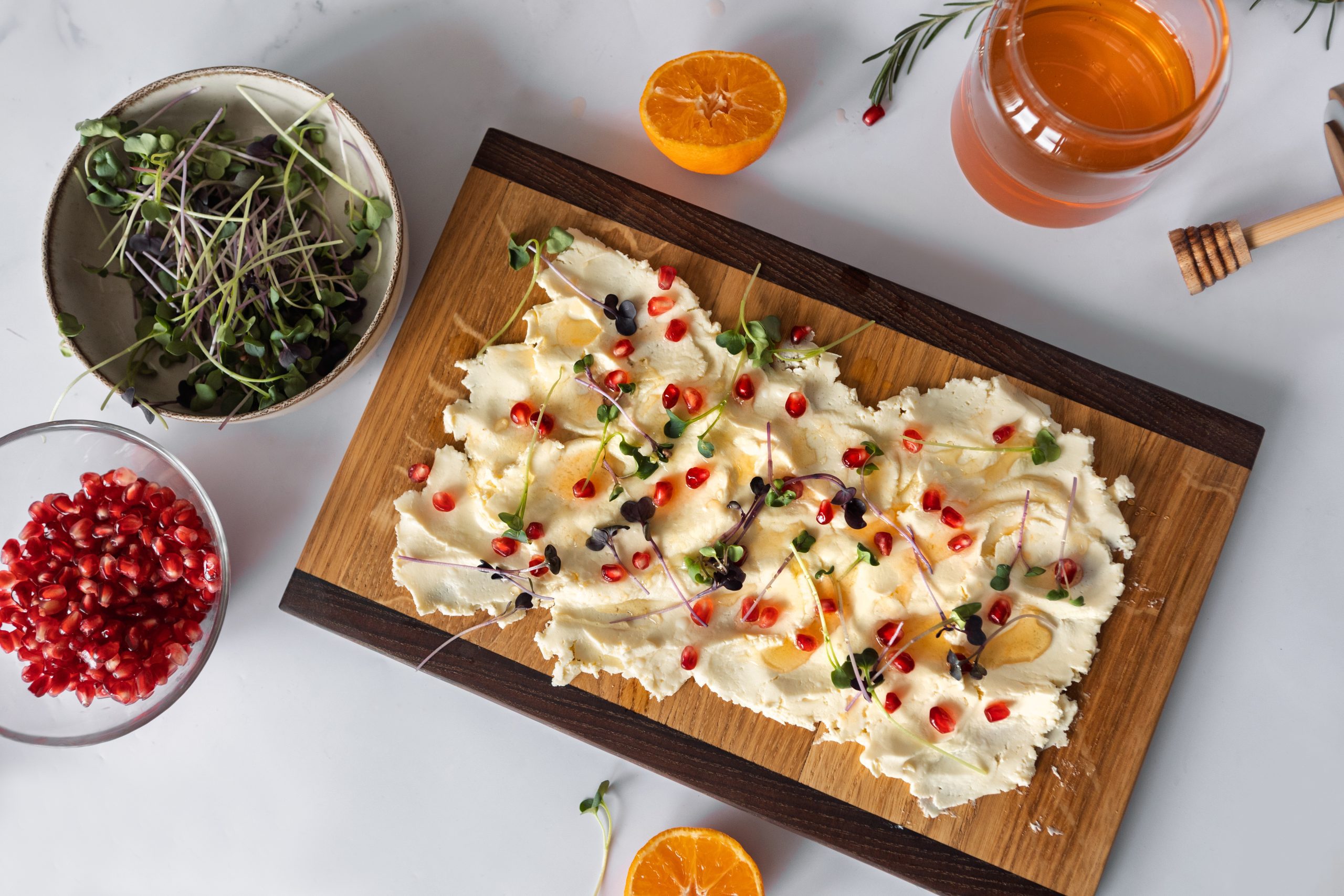A guide to butter boards (and their Northwest roots)

A few years ago, Justine Doiron, aka Justine Snacks, predicted that butter boards would be the next charcuterie board trend. She was semi-joking — but the boards’ popularity has spread like a swipe of softened butter. With cool toppings. (The dairy industry is definitely a fan.)
Butter boards are especially suited to holiday entertaining, though some devotees even make personal boards for single-serving consumption. (No judgement…unless you aren’t using good-quality butter.)
Butter boards require no special skills or training. They pack a visual punch and deliver major decadence without seeming stuffy. They’re an economical alternative to the charcuterie board, and way less stressful than trying to concoct social media’s other viral holiday appetizer, the charcuterie chalet.
And while these shareable appetizers come with a ton of built-in flavor freedom, there are some basic steps for creating a good one. Read on for tips, serving ideas, and some foundational flavor combos.
What Is a Butter Board?
One could argue a concept this simple has always existed. But the internet traces its TikTok traction to Doiron. Her instructional video kicked off a wave of other people documenting their own sweet and savory butter boards online.
Doiron, in turn, credits a Northwest chef as the real inspiration for butter boards. Joshua McFadden of Portland won a James Beard Award for his 2017 cookbook, Six Seasons, co-authored with Martha Holmberg. Technically it’s a cookbook about vegetables. But it devotes a page to ‘”Herbed’ Butter with Warm Bread.”
McFadden’s instructions are a proto-template for today’s butter boards: Smear butter on a cutting board, season generously, “then just start layering” with toppings. And finally, “Place on the table with a nice warm country loaf to rip into and let the good times begin.”
In the cookbook, the chef specifically mentions black pepper, chile flakes, pickles, and capers as butter board toppings.
Preparing a Butter Board
While it isn’t a difficult undertaking, “making a butter board is not for those on a time crunch,” says Meryl Marr, a former pastry chef, now vice president of marketing at Straus Family Creamery. Your first order of business: Get your butter to a consistency that’s soft and spreadable. She recommends letting butter sit at room temperature for at least 30 minutes, until it’s “soft enough to spread, but not so warm that it’s melted and greasy.”
Don’t be tempted by the microwave. That technique can make the butter separate, which means it’s no longer emulsified and won’t spread easily. And spreading is the operative verb of any good butter board.
Marr says to “always go with unsalted butter, so you can control the level of salt on your board.” Others do prefer salted butter; like so many aspects of these boards, it’s largely a matter of personal preference. Once the butter is ready, smear it fetchingly on a wooden cutting board. Or, better yet, a slate or marble platter. They’re less porous, so cleanup is easier and there’s less concern about butter seeping into cracks in the wood and encouraging bacteria. The New York Times suggests using a layer of parchment paper if you’re working with a wooden board, for easier cleanup.
The internet is full of videos of people spreading butter with various spreading knives, but also consider using the back of a spoon, or an offset spatula, to spread, feather, splay, and otherwise disperse your butter evenly across the board. Don’t be afraid to create divots and crevices. Those will help hold your toppings and capture flavors.
Butter Board Ideas
“Recipe” feels like overkill when planning out a butter board. In her original video, Justine Doiron started with “tons of flaky salt, tons of lemon zest.” These two ingredients add acid and depth, thus they form the foundation of many a butter board — think of them as your mirepoix. A sprinkle of large-flake salt like Maldon or Jacobsen’s, or even a finer-crystal salt like Fleur de Sel or San Juan Sea Salt works well.
Next, sprinkle on any herbs and other toppings that appeal to you: cilantro, parsley, red onion, basil, and mint are popular choices. Doiron likes mint with coriander, cardamom and honey, or roasted garlic cloves with rosemary and black pepper.
Honey. Hot honey. Nuts, figs, spices, edible flowers. Fried or roasted garlic: Combo possibilities abound. These can be as simple as food blogger Meg Quinn’s salt, honey, and edible flowers, or even sweet — a la A Pinch of Adventure’s combo, made with apples, cinnamon, maple syrup, and candied pecans.
The official Organic Valley blog suggests a holiday version with orange zest, lingonberry jam, cinnamon, and pomegranate seeds. The locals at New Day Northwest went with basil, rosemary and mint with figs, walnuts, and a drizzle of hot honey.
Some people even get fancy and compound their butters first. That extra step negates the simplicity, a big part of the butter board’s appeal. But it leans into the other major draw: The butter board’s endless capacity for self-expression.
Even much-decorated chefs like Rick Bayless can’t resist the butter board’s versatile appeal. His version is taco inspired and mixes butter with goat cheese. Bayless also favors salted butter and suggests beating butter and goat cheese together with the paddle attachment of a mixer.
The Best Bread for Butter Boards
The butter board began as a turbo-charged take on bread and butter, so its originators served it with slices of good, crusty bread. A crusty sourdough boule is hard to beat, but a ciabbata or even traditional baguette slices are a treat.
Bread may be classic, but this is a pretty new trend and you get to help define what’s classic. Recipes have evolved to include crackers, crostini, even apple slices or pretzels, so go with your own tastes.
As the boards’ popularity has spread, so has controversy about the potential for double dipping on a board meant as a communal appetizer. Doiron went on to tell the Associated Press that the “biggest mistake” in her original video was tearing off a piece of bread for butter-swiping purposes, rather than setting out knives so guests can daub individual portions onto their plates.
So don’t forget to lay out utensils and plates. Then, let the dipping begin.
